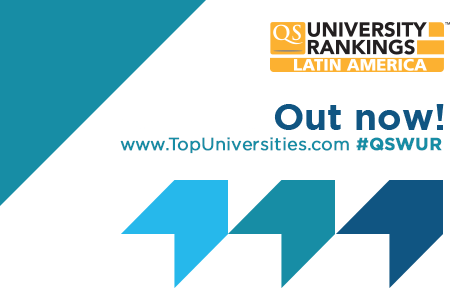
QS’s 2015 University Rankings for Latin America show that the region’s biggest and most populous country is also home to its top universities. Brazil’s University of Sao Paulo has come top in our fifth Latin American ranking, with Unicamp, the Universidade Estadual de Campinas, in second place. Brazil has 17 of Latin America’s top 50 universities, including eight of the top 20. Of these 17, eight are ranked more highly than last year.
The most remarkable changes in these rankings since 2014 are also to be found in Brazil. UFPR University in Paranal and Federal Catarina University have risen from 40 and 41 respectively in 2014 to 23 and 24 this year. These 17-place gains make these the biggest risers in the upper reaches of the ranking.
The Pontifical Catholic University in Chile fell from first to third place, ahead of the University of Chile in fourth. The top 20 universities we rank are in six nations – Argentina, Brazil, Chile, Colombia, Mexico and Peru – that account between them for the bulk of the region’s population.
These rankings are produced using some measures in common with the QS World University Rankings, and other specific to this project. In the first group are data from our global academic and employer surveys, and on each institution’s faculty/student ratio. To these we add figures for staff with a PhD degree, to gauge the academic capacity of each university’s faculty, along with measures of research papers per faculty member and the number of citations per paper. These two indicators come from Elsevier’s Scopus database.
Finally, and uniquely to the QS Latin America ranking, we use data from the Elsevier’s Webometrics ranking of universities’ online presence to measure their visibility in the virtual world.
These results show that Chile has eight top-50 universities, Mexico seven, Colombia five, and Argentina eight. While this is an impressive total, its top entrant, the University of Buenos Aires, is placed in only 15th position.
An indicator that we know is of acute interest to university applicants is faculty/student ratio. Of our top 20 universities overall, only two are in the top 20 on this measure. So big reputations may also mean big class sizes.
As one might expect, the big, prestigious universities of major Latin American cities are also its most research-intensive institutions. Unicamp and Sao Paulo are first and second in our measure of papers published per faculty member, and other universities that are highly placed overall do well here too. These universities also have a high percentage of staff with a PhD, the basic driving licence for a research career.
In addition, universities that do well in the real world are also big in cyberspace. Webometrics’ top universities in Latin America are Sao Paulo and Unam, first and sixth in the overall ranking, while 12 of the top-20 universities overall are also in the top 20 on this measure.
This ranking features institutions from 20 nations including some smaller ones such as Panama and the Dominican Republic. There are four from Cuba, led by Havana in 83rd place. It will be interesting to see in future years whether renewed contact with the US allows Cuban higher education to grow its already strong regional and world reputation.



